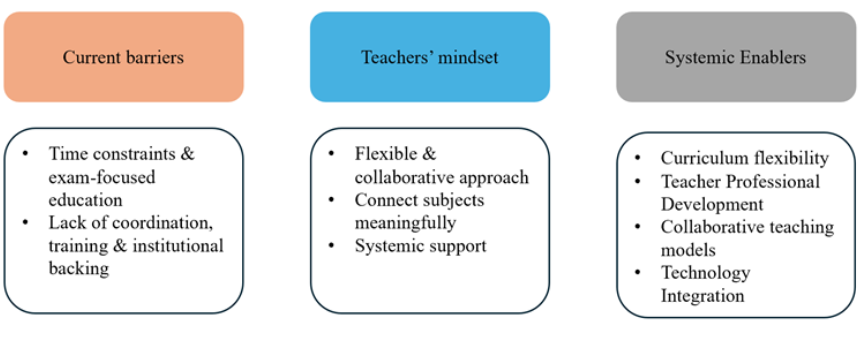
How Are Educational Stakeholders in Italy and Cyprus Advancing Interdisciplinary Education?
Prepared by University of Nicosia
In today’s fast-evolving world, education can no longer afford to stay confined within rigid subject boundaries. The challenges our students are already facing such as climate change, digital transformation, global citizenship don’t come labeled as “Math,” “History,” or “Science.” They demand interdisciplinary thinking. But what does interdisciplinarity truly mean, especially in the context of secondary education?
Recent roundtable discussions in Italy and Cyprus, organized under the Erasmus+ project Interdisciplinary Approaches for Innovative Education (InterEd) (Project number: 2023-1-IT02-KA220-SCH-000151634), brought together educators, academics, and policymakers to explore this question. While each country has its unique educational landscape, a shared vision emerged: one that sees interdisciplinarity not just as a method, but as a mindset shift.
Interdisciplinarity Starts with the Teacher’s Mindset
In Italy, stakeholders emphasized that interdisciplinarity begins with the teacher. It’s about adopting a flexible, collaborative approach where educators move beyond delivering isolated content and instead design learning experiences that connect subjects in meaningful ways. While Italian primary schools naturally foster this due to structural design (one teacher covering multiple subjects), secondary education becomes fragmented, making such integration harder.
Similarly, in Cyprus, teachers and academics pointed to the “wall” of the official curriculum, a rigid and time-pressured framework that limits cross-disciplinary opportunities. Both countries recognized that without a shift in how teachers perceive their role, and without systemic support, interdisciplinary teaching remains more of an aspiration than a reality.
Breaking Down Curricular Barriers
One of the strongest commonalities between Italy and Cyprus is the recognition that curricular structures are a major obstacle. In Cyprus, time constraints and exam-focused education create a hierarchy where certain subjects dominate, leaving little space for creative, interdisciplinary projects. Italian educators echoed this sentiment, noting that even though interdisciplinarity is mandated by law, it often fails in practice due to lack of coordination, training, and institutional backing.
The Role of Teacher Development: Enabling Real-World, Interdisciplinary Learning
Both Italian and Cypriot stakeholders underscored that interdisciplinarity cannot flourish without serious investment in teacher professional development. It’s not enough for teachers to be experts in their individual subjects but they must also be equipped to design learning experiences that connect disciplines and reflect real-world complexity.
Approaches like Problem-Based Learning (PBL) and Phenomenon Based Learning (PhenoBL) are central to this shift as they encourage teachers to collaborate across subject areas, guiding students to tackle authentic, multifaceted problems that don’t belong to just one discipline. Technology was also recognized as a key enabler, offering innovative tools to bridge subject boundaries and support collaborative teaching practices. The following figure depicts the existing barriers, the preferred teacher mindset, and the systemic enablers that were described and highlighted by stakeholders in Italy and Cyprus.

So, Are we ready to embrace Interdisciplinary Education?
The conversations in Italy and Cyprus make one thing clear: interdisciplinarity in secondary education is a necessity. In a world defined by complexity and rapid change, preparing student’s demands that we move beyond outdated, siloed approaches to teaching. However, turning this vision into reality requires more than just good intentions. It calls for flexible curricula that allow subjects to intersect naturally, supportive policies that encourage innovation, and structured opportunities for teacher collaboration. As these discussions highlighted, it is the educators, academics, and policymakers who are best positioned to lead this shift, driven by the understanding that interdisciplinarity empowers students to connect ideas, think critically, and tackle challenges that do not fit into a single subject.
This blog post was created by:

